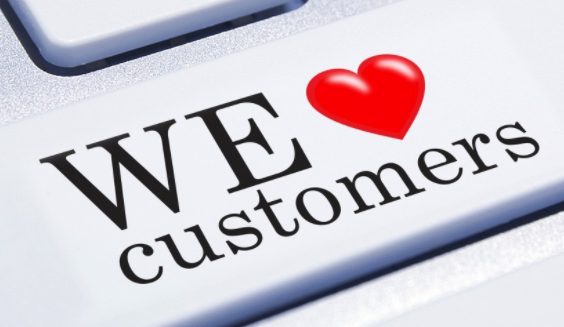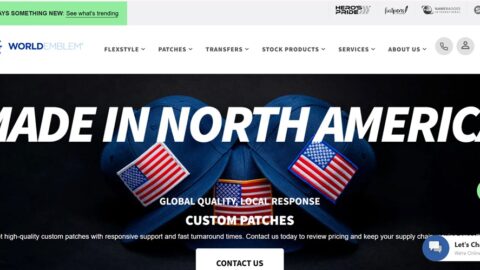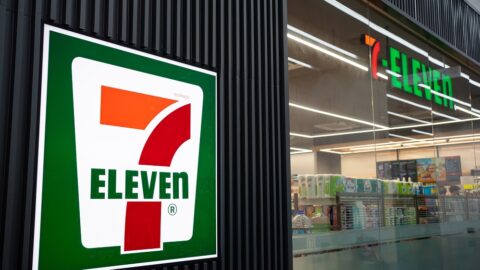Consumer expectations have reshaped the dynamic of how retailers and brands approach their partnerships. With fewer people shopping in stores and direct-to-consumer selling on the rise, the retailer-brand relationship is strained:
-
Brands are finding a niche in direct-to-consumer sales;
-
Loyalty is becoming more “brand”-focused and less merchant-focused;
-
Data analytics sharing is vital to successful retailer-supplier partnerships; and
-
Retailers are looking for lower prices, better content and more co-op investment from their brand partners.
“Retailers and suppliers will continue to be essential to one another in the quest to provide consumers with the best product and best price in the most convenient way,” said Shannon Warner, VP of Capgemini Consulting’s Consumer Products and Retail Practice in an exclusive interview with Retail TouchPoints. “But I think the roles between the supplier and the retailer will continue to evolve, and one of the biggest areas of tug-of-war between the two will be: who owns the customer?”
Brands Find Value In Direct-To-Consumer Selling
As shoppers continue to increase their time shopping online, brand manufacturers that would otherwise sell in third-party retailer stores may now opt to sell on their own web sites instead, or even open their own stores, cutting out the middleman altogether.
Footwear and athletic apparel brands Nike and Under Armour are two of the biggest examples of companies that have expanded on the direct-to-consumer business model to reach their consumers at every touch point. In another segment, luxury brands Coach and Michael Kors dialed back their presence in department stores in an effort to avoid diluting the brand in alternate channels.
Large CPG companies also are delving into the direct-to-consumer mix. In 2016, Procter & Gamble launched a test of an online subscription service for the Tide brand that enables consumers to receive regular deliveries of Tide Pods laundry detergent. That same year, Unilever purchased subscription-only service Dollar Shave Club for $1 billion, taking aim at competitors sold in stores such as Gillette and Schick.
“Brands will always be attracted to the margins of direct-to-consumer business,” said Ryan Craver, Chief Digital Officer of Lamour and Founder of Commerce Canal, in an interview with Retail TouchPoints. “Typically, this customer is their most loyal or willing customer to buy directly from the brand with no need to cross brand shop. Most brands recognize the value of selling through third parties for awareness but would ideally have all their customers come direct.”
During a panel discussion at the 2017 Retail Innovation Conference, Craver noted that it’s simply easier than ever for a brand to sell on its own.
“The ability for a brand to open up a Shopify site tomorrow, or start drop shipping for Amazon’s, Walmart’s or Jet’s marketplace, has never been easier,” Craver said during the panel. “We can all start a brand tomorrow, if we wanted to, and call it whatever we want. That has changed a lot of retailers in the way they do business. They continue to see declining store traffic and see shipping/fulfilling costs and dot-com orders going up, and all the brands they are carrying open their own stores. That’s made a lot of opportunities for some small-time brands to try and get bigger.”
Putting The “Brand” In Brand Loyalty
The loyalty shoppers feel toward a retailer often has been a factor in the decision to visit a store or complete a purchase, but some brands are stepping away from the stores to create loyalty programs for their own products. Shoppers can access these loyalty programs at any retailer that sells the product, giving the brand a top-of-mind advantage over the merchant.
“Estée Lauder has lots of different cosmetics brands and historically it’s always been the Macy’s and the Nordstroms, or the Sephoras or Ultas, that have sold those cosmetics directly to the consumer,” Warner said. “But in the last year, many of Estée Lauder’s cosmetic brands have rolled out loyalty programs. The consumer will scan the receipts from the retailer where they purchased it, and then they get points for loyalty for having purchased that brand. The benefit for the brand supplier is that they now have that relationship with the consumer. They can track how often someone uses their mascara and market directly to the consumer on the app. It’s a great tactic for the supplier and a definite threat to the retailer.”
Access To Consumer Data Remains Key To Business Success For Retailers And Brands
In addition to establishing a connection with consumers, brands that shift to direct-to-consumer gain better and more direct access to shopper data. As DTC continues to grow and brands create more of their own loyalty programs, retailers are being put on the defensive. However, merchants still need to optimize brand partnerships in order to satisfy shoppers. Retailers must leverage data to ensure that their stores and online sites can answer the following questions, according to Gina Ashe, CEO of ThirdChannel:
-
Where is the product on the floor, and is it easily accessible online?
-
Which brands are placed next to each other?
-
Are products displayed correctly?
-
Which displays are driving the most sales?
-
How much do associates know about the products they’re selling, and what are the things they really need to know?
-
Would this particular retail environment benefit from brand activation?
-
Should the brand send their own people into retail stores to engage with consumers and bring those products to life?
“If you can identify those facts, it creates a ripple effect throughout the entire retailer and all its stores,” said Ashe in an interview with Retail TouchPoints. “Retailers need to find those sales drivers so they and their brand partners can stare at the same numbers. Most retailers and most brands really don’t know what’s happening on the ground in the thousands of stores that carry the products. They know at a very high level, but the ground-level numbers can be very complicated to get your arms around.”
Ashe noted that the retailers and brands that are able to get on the same page in understanding data to identify specific problems typically benefit due from the increased transparency.
“It’s a win-win for both of them,” Ashe said. “If I’m a brand and I’m selling my product in a store, and they start to sell me, it’s a win for me, a win for the retailer — and it’s actually a win for the consumer because once they walk in the door, they want to see the stuff they want to buy. It needs to all come together in that environment perfectly for those sales to happen.”
Retailers Seek Lower Prices, Better Content, More Investment From Brands
Retailers stress the importance of three must-haves from brand partners, according to a recent ChannelAdvisor survey:
-
Lower prices (82%);
-
Better content (50%); and
-
A greater co-op investment (42%) for product advertising and promotion.
While retailers’ desire for lower prices may be obvious, the need for better content can also be a strong competitive differentiator. As many as 88% of consumers say that product content is the key driver of their purchase decisions, according to Salsify. To satisfy this need, brands should focus on creating and providing better product content to their network of retailers. Modern content management solutions can help keep content organized and up to date.
Brands also should consider strengthening the connection with retailers by supporting merchant partners via their own online presence. As many as 73% of brands use their web site to provide product information and other content, but only 36% use their site to direct visitors to specific retail stores, according to ChannelAdvisor.
The survey also revealed that 60% of brands are still using time-consuming manual spreadsheets to share product information — and 30% use a custom solution, which can often be expensive to maintain. By implementing automated data sharing solutions, retailers and supplier partners can benefit equally from the advantages of more efficient processes.
In 2017 and beyond, it’s clear that retailers and brands must commit to more collaborative strategies. But in an evolving retail environment that can be very volatile, brands are motivated to establish a direct connection with consumers. With many brands now turning to direct-to-consumer sales and loyalty programs, retailers have to leverage data to understand the specific issues that might be holding back sales, in order to create value for both sides of the partnership. By understanding problem areas, retailers and brands can spend more time working together to improve sales, revenue and loyalty for both, instead of fighting for the consumer’s split attention.













